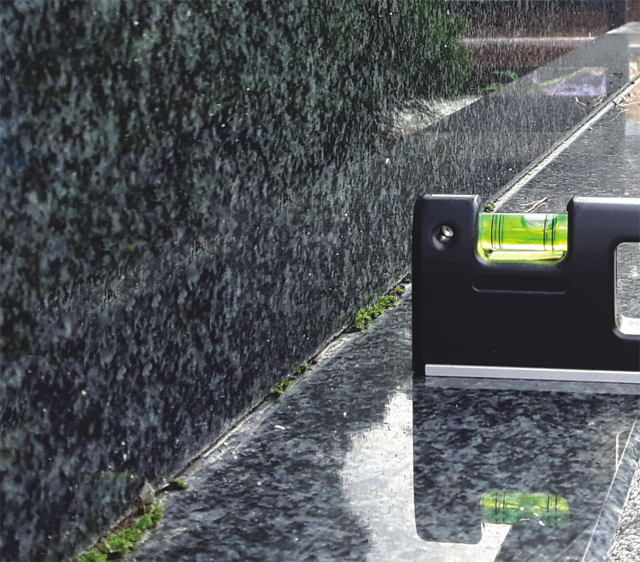TOMBSTONE – THE MOST COMMON INSTALLATION ERRORS

During my working career, I frequently come across damage to tombstones caused by the counter-slope of the cladding, says Michał Firlej from Stone Consulting – a forensic expert and expert at PIH (www.stoneconsulting.pl).
The cladding (floor, frame) is the lowest horizontal part of the tombstone, usually resting on a foundation, frame or slab foundation. It is the element most exposed to water. Therefore, it should be tilted so that water drains from it.
It is assumed that such a slope should be 2 mm, which is indeed imperceptible, yet sufficient for the flow of water from a horizontal surface. At the same time, it is very easy to achieve this slope by applying a suitable mortar or adhesive on which the cladding is laid.
Unfortunately, the reality is different. Very often I see tombstones with a counter-slope, which causes water to flow down to the edges (frame, box) and collect there. In winter, the mortar is damaged and washed out due to freezing and thawing. Moreover, in spring and summer this effect is amplified by plants with sufficient conditions for vegetation. After 3-4 years, the impact of water and plants is already visible in the form of a noticeable crack, which quickly grows bigger and can lead to the disintegration of the tombstone.
By the way, it is worth noting that the slope angle and other standards for handling tombstones are clearly set by the ZPBK standard. The nomenclature used in this text is also based on this standard. If you would like to read this multi-page document, contact me at 695 164 288.
Source: Kurier kamieniarski
Author: Michał Firlej | Published: 18.9.2018
